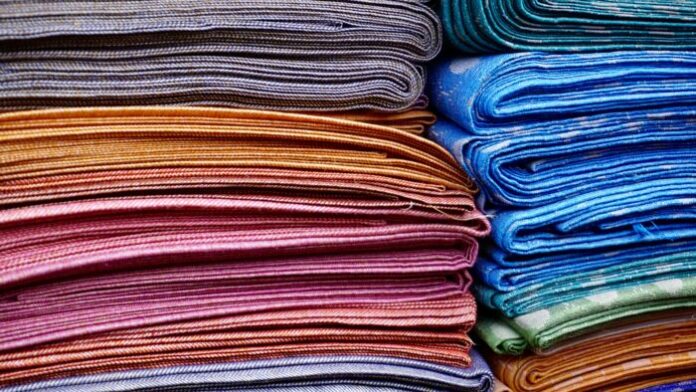
Transforming the polyethylene of plastic bags and food films into fabric? Apparently it is possible. To tell us this is a research conducted by the engineers of the Massachussets Institute of Technology (MIT) in collaboration with the Polytechnic of Turin and the National Institute of Metrological Research (INRM), which has just appeared in the journal Nature Sustainability.
The textile industry is one of the few fields in which the equation “natural = sustainable” can sometimes lose its validity: the use of natural fibers such as cotton, linen or silk, commonly perceived as eco-sustainable, conceals a high environmental impact, understandable only by analyzing the entire life cycle of the fabric that goes from the production of the fiber, to spinning, dyeing and weaving.
The production of colored fabrics is a very polluting process, requiring over 98 trillion liters of water every year and producing fluid waste with a high concentration of pollutants, which require a significant cost in order to be disposed of safely.
And on these issues, the research “Sustainable polyethylene fabrics with engineered moisture transport for passive cooling” of the Polytechnic of Turin and Massachussetts Institute of Technology (MIT) developed. Thanks to the manufacturing processes and the chemical-physical computational modeling of microfibers, technical fabrics can be made more performing and more sustainable than natural ones.
“The environmental impact of natural fiber fabrics is also significant during their washing, due to the poor controllability of the chemical and geometric characteristics of these fibers which leads to a significant energy demand both in the washing and drying phases”, explain Matteo Fasano, researcher at the Multi-Scale ModeLing Laboratory – SMaLL of the Energy Department at the Politecnico di Torino and Pietro Asinari, professor of the Energy Department and director at the National Institute of Metrological Research, academic supervisors of the project.
Polyethylene fabrics have therefore been identified as a valid alternative. Polyethylene is the plastic material with the highest production volumes in the world (over 149 million tons per year) and is found in commonly used objects such as packaging or food containers, most of the time disposable.
“Accused of harmfulness to the environment, on balance the production of colored polyethylene fabrics has a 60% lower environmental impact than those made of cotton. Polyethylene fibers also have low cost and are ultralight, and their structure can be precisely optimized to modify their mechanical, thermal and optical characteristics, thus obtaining high resistance to breakage and abrasion and excellent heat dissipation. In addition, the colored pigments typical of “dirt” adhere with difficulty to the surface of polyethylene fibers thanks to their simple molecular structure, resulting in stain-resistant properties that simplify washing at low temperatures “- explains Svetlana Boriskina, research coordinator at the MIT.
However, this also means that the coloring of the fabric (usually white) must take place with an innovative process: the pigments, natural or synthetic, are directly encapsulated inside the fibers during their forging, thus avoiding their release during washing. “.
The textile industry has long neglected the use of polyethylene in clothing, due to the poor breathability and wettability of the fibers which are uncomfortable. To improve the comfort aspect of the garment, the research focused on the engineering of the water transport properties in the fabric, characterizing the effect of different weaves and optimizing the geometry of the polyethylene fibers.
“By acting on the manufacturing process, it is possible to modify the surface chemical characteristics and the shape of the fibers, controlling the wettability and the final capillary properties of the fabric, ie its ability to absorb and transport a fluid inside it. The excellent performance achieved by the new fabric studied is due to the ability of the polyethylene fibers to drag water onto their surface while remaining waterproof, thus preventing the fluid from infiltrating the fibers themselves – which normally happens with natural ones. ”- explains Matteo Alberghini, PhD student at the Energy Department and the CleanWaterCenter of the Politecnico, first author of the published article.
The combination of these properties makes this new type of fabric washable and dried at low temperatures, avoiding the onset of stains and ensuring quick drying times. Considering contexts where frequent washing of large quantities of fabrics is required, for example hotels or hospitals, this can translate into considerable energy savings. Finally, polyethylene boasts a simple and established process of industrial separation and recycling: this allows new garments to be created even from recycled material, with a great potential for a circular economy.



































